Deficiencies of human complement component C4A and C4B and heterozygosity in length variants of RP-C4-CYP21-TNX (RCCX) modules in caucasians. The load of RCCX genetic diversity on major histocompatibility complex-associated disease
- PMID: 10859342
- PMCID: PMC2193198
- DOI: 10.1084/jem.191.12.2183
Deficiencies of human complement component C4A and C4B and heterozygosity in length variants of RP-C4-CYP21-TNX (RCCX) modules in caucasians. The load of RCCX genetic diversity on major histocompatibility complex-associated disease
Abstract
The complement component C4 genes located in the major histocompatibility complex (MHC) class III region exhibit an unusually complex pattern of variations in gene number, gene size, and nucleotide polymorphism. Duplication or deletion of a C4 gene always concurs with its neighboring genes serine/threonine nuclear protein kinase RP, steroid 21-hydroxylase (CYP21), and tenascin (TNX), which together form a genetic unit termed the RCCX module. A detailed molecular genetic analysis of C4A and C4B and RCCX modular arrangements was correlated with immunochemical studies of C4A and C4B protein polymorphism in 150 normal Caucasians. The results show that bimodular RCCX has a frequency of 69%, whereas monomodular and trimodular RCCX structures account for 17.0 and 14.0%, respectively. Three quarters of C4 genes harbor the endogenous retrovirus HERV-K(C4). Partial deficiencies of C4A and C4B, primarily due to gene deletions and homoexpression of C4A proteins, have a combined frequency of 31.6%. This is probably the most common variation of gene dosage and gene size in human genomes. The seven RCCX physical variants create a great repertoire of haplotypes and diploid combinations, and a heterozygosity frequency of 69.4%. This phenomenon promotes the exchange of genetic information among RCCX constituents that is important in homogenizing the structural and functional diversities of C4A and C4B proteins. However, such length variants may cause unequal, interchromosomal crossovers leading to MHC-associated diseases. An analyses of the RCCX structures in 22 salt-losing, congenital adrenal hyperplasia patients revealed a significant increase in the monomodular structure with a long C4 gene linked to the pseudogene CYP21A, and bimodular structures with two CYP21A, which are likely generated by recombinations between heterozygous RCCX length variants.
Figures

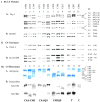
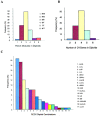
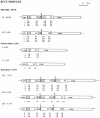
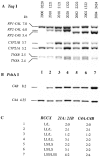
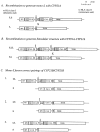
References
-
- Klein J., Takahata N., Ayala F.J. MHC polymorphism and human origins. Sci. Am. 1993;269:78–83. - PubMed
-
- Dawkins R., Leelayuwat C., Gaudieri S., Tay G., Hui J., Cattley S., Martinez P., Kulski J. Genomics of the major histocompatibility complexhaplotypes, duplication, retroviruses and disease. Immunol. Rev. 1999;167:275–304. - PubMed
-
- Yu C.Y. Molecular genetics of the human MHC complement gene cluster. Exp. Clin. Immunogenet. 1998;15:213–230. - PubMed
-
- Mauff G., Luther B., Schneider P.M., Rittner C., Strandmann-Bellinghausen B., Dawkins R., Moulds J.M. Reference typing report for complement component C4. Exp. Clin. Immunogenet. 1998;15:249–260. - PubMed
Publication types
MeSH terms
Substances
Grants and funding
LinkOut - more resources
Full Text Sources
Research Materials
Miscellaneous

